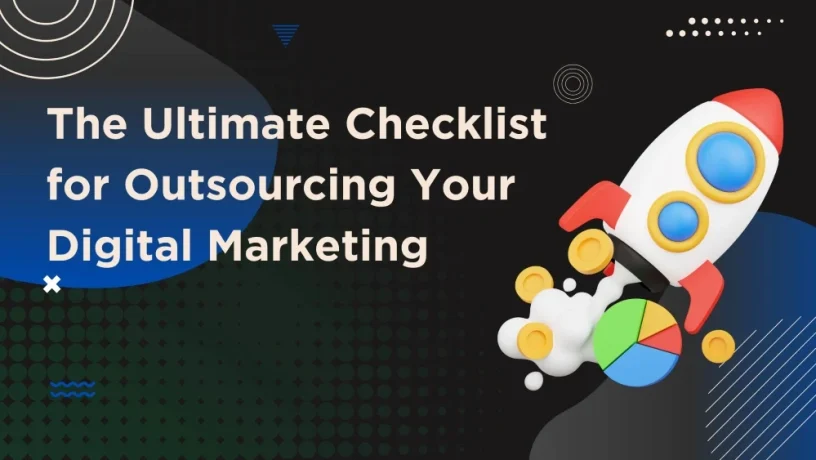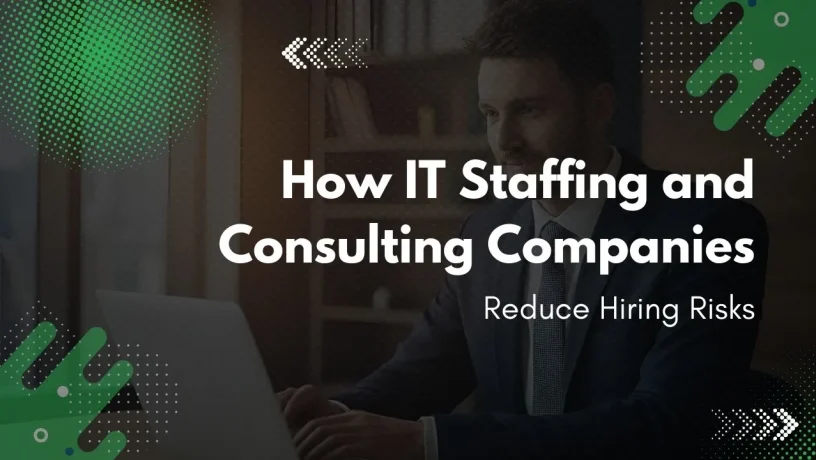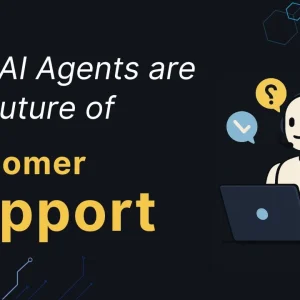The Ultimate Checklist for Outsourcing Your Digital Marketing
The competition for consumers’ attention has never been tougher. Businesses in the past had limited choices for marketing their goods: a radio jingle (just like one with Dettol), a print advertisement, and perhaps a billboard. Now, the online explosion has led to an environment in which there are more ways to promote your message than ever before.With the never-ending need for a 3rd party, it can be hard for businesses to look for the best outsourcing partner to help them satisfy their needs. The choices are endless, but the qualified ones are too broad to narrow down. There will always be a way to escape this type of stress. To help you filter out the best partner, here is the ultimate checklist you should know for when you are looking for the best outsourcing digital marketing partner for your business. What Does Outsourcing Digital Marketing Mean? Hiring a third-party specialist to help firms sell their brands online is known as outsourcing digital marketing. This plan is done of finding and maintaining an in-house team, you leverage an expert digital marketing agency to help you meet your online marketing objectives.A good agency will learn about your business and develop effective strategies to assist you in meeting your goals. Why Consider Outsourcing Digital Marketing? The Benefits of Outsourcing Digital Marketing Before diving into the “how,” let’s understand the compelling reasons why businesses choose to hire out marketing. The benefits of outsourcing digital marketing are numerous and can significantly impact your bottom line: Access to Specialized Skills: Digital marketing is enormous and constantly developing. There are a lot of specialties in this career that require specialists to stay on the edge of all the trends, algorithms, and technologies. Outsourcing means you now have access to expertise available in the areas of SEO, PPC, social media, content marketing, email marketing, and more, without the arduous training and hiring cycle. Cost savings: Once you develop and build your in-house digital marketing team, you have just opened yourself to enormous investment costs: salaries, benefits, office space, software licensing, and training for your personnel. With outsourcing, you will pay for what you need and when you need it, all for a lower cost and without the overhead. Greater Efficiency and Focus: By outsourcing your digital marketing functions, your internal team can focus on running your operating activities, which leads to increased productivity and efficiency to support the business. How to Outsource Digital Marketing: Your Step-by-Step Guide Successfully outsourcing your digital marketing requires a structured approach. Here’s how to outsource digital marketing effectively: 1. Define Your Digital Marketing Needs and Goals Before you even think about looking for an agency, you need to have a crystal-clear understanding of what you want to achieve. What are your current marketing challenges? Are you struggling with lead generation, brand awareness, website traffic, or conversions? What specific digital marketing services do you need? Do you require SEO, content creation, social media management, paid advertising, email marketing, or a comprehensive strategy? What are your measurable goals? Be specific. Do you want to increase website traffic by X% in Y months? Generate Z leads per month? Improve conversion rates by A%? What is your budget? Having a realistic budget in mind will help you narrow down your options and find agencies that align with your financial capabilities. 2. Research and Vetting Potential Agencies This is a critical step in your Outsource Marketing Guide. Don’t just pick the first agency you find. Thorough research is essential. Look for Agencies with Relevant Experience: Seek out agencies that have a proven track record in your industry or with businesses of a similar size. Look at their case studies and client testimonials. Check Their Portfolio: Review their past work to assess the quality and creativity of their campaigns. Evaluate Their Expertise: Do they specialize in the services you need? Are their team members certified in relevant platforms (e.g., Google Ads, HubSpot)? Read Reviews and Testimonials: Look for reviews on independent platforms and reach out to their past clients for direct feedback. 3. Request Proposals and Compare Them Carefully Once you have a shortlist of agencies, request detailed proposals. Be sure that the proposals relate to what you need specifically: Do they detail how the proposals will help you achieve success with your set goals? Compare pricing models: How do they price themselves (hourly, project-fee, or retainer)? What is included in terms of expenses/fees? Beware if their prices seem unusually cheap, this could mean they do not provide the quality service you would expect, or there might be hidden charges! Identify a clear strategy: Does their proposal reflect an understanding of your business? Does it express an understanding of your target audience? Is there a clear execution plan? Consider how they plan to report and track the results of your campaigns. What tools and metrics do they use? Are they industry standard? 4. Conduct Interviews and Assess Cultural Fit The best proposals in the world won’t matter if you don’t have a good working relationship with the agency. Interview Key Team Members: Talk to the individuals who will be directly working on your account. Assess Their Understanding of Your Business: Do they grasp your brand values, target audience, and competitive landscape? Discuss Communication Protocols: How often will you communicate? What channels will be used? Gauge Their Proactiveness and Problem-Solving Skills: Do they offer innovative solutions or simply follow instructions? 5. Start Small (If Possible) and Set Clear Expectations If you’re not ready for a big commitment, consider doing a smaller, short-term project to see how it goes. Pilot Project: Select a single campaign or a limited subset of services to see how things go and how we work together. Establish Key Performance Indicators (KPIs): Define what metrics you’ll use to evaluate success upfront. Set Communication Cadence: Make sure to discuss how often you’ll check in, how often you’ll report on progress, and how you’ll communicate. 6. Implement a Robust Reporting and Feedback Loop Over the long term, the
How to Seamlessly Integrate Remote Developers into Your Business
In the world of remote resources, developers have nearly won the game. Today, almost 74% of software developers directly work in fully remote or hybrid setups globally, gaining better insights and productivity.The above stats clearly show that the world of “employment” is changing rapidly, and the most significant revolution has undoubtedly been the mainstream adoption of remote work. Scaling businesses, especially ones focused on rapid innovation, have an opportunity to engage and employ remote developers in different geographic locations, which is not only an option but a strategic advantage. But how do you close that distance, create a strong and connected influencer around the world from a time zone away? This isn’t about hiring someone across the world, it’s about creating a place where distance will not impact your ability to connect and collaborate. Investing in Remote Developers: A Productive Approach Do you recall a time when geographic location hampered the acquisition of talent? We’ve mostly moved past those times. Numerous highly qualified resources have emerged as a result of the digital market landscape, and many of the most brilliant brains in software development are opting to work remotely.Remote Workers, usually of the freelance variety, are very comfortable managing mission-critical projects. They would need remote access to get working to remotely work for enterprise organizations, or do their work, collaborate, and deploy their website or software. Tech-savvy companies are maximizing the cloud for storage, hosting, data processing, and any number of hiring offshore developers. Cloud-based resources are low-cost solutions, enabling flexibility in an organization to remain agile (finding the right talent when you need to) is critical, especially for the organization. Why Hiring Remote Developers is Not Just a Trend Anymore? It’s very clear that with the essence of work, any pandemic cannot be a reason to stop the work from being done. In this case, remote work is not just a choice but a productive approach to enhance work quality and efficiency. Access to a Larger Talent Pool: No longer limited to your local market, you can access a global talent pool of specialists and talent.” This is particularly important if you are working in niche technologies or emerging frameworks in which local talent is limited. Cost-Effectiveness: While often not the number one reason in hiring qualified developers, remote work can save money in a variety of ways, such as office space, utilities, and even salaries (depending on where the remote developer is). Diversity and Innovation: A diverse team means diverse thinking, which brings more creative ideas and innovation to the workplace. The Remote teams, when created, inherently have geographical and cultural diversity with different resources clubbed together. Flexibility and Scalability: Need to scale quickly for a new project? You can only scale remotely with flexibility, so you can grow and shrink your team when you need with flexibility that does not exist in local environments. That said, the real question is not why you should consider integrating remote developers, but how to do it, not just effectively, but seamlessly. Managing Remote Teams: Approaches To Consider The tips below could be used to construct a well-functioning and manageable remote team of offshore developers: The Iterative Approach: The scope of work can be subdivided into shorter segments of time when the team demonstrates its completed work. Daily Meetings: Daily meetings provide team members with information on existing opportunities, tasks before them, and concerns their team is facing. The advantage of a daily meeting allows each team member to see how the overall work is progressing for a project. Accessibility of Information: Create a Scrum board that depicts the team’s backlog. A Scrum board makes the entire development process super transparent, as any member of the project can look into the status of work, set priorities, and talk about items in the backlog. Communication Basis: It is an essential practice to keep connected with the team in work. Communication tools today have every major functionality: instant messaging, voice and video calls, web conferencing, file sharing, and screen sharing. Screen sharing is a useful tool for a smooth collaboration when you outsource web development. Of course, screen sharing is essential when you are working on the same project. Development: Code is ultimately what the programmers produce. Development teams track new code or changes to code through GitHub and Bitbucket. Annual meetups: A remote web or software developer, working in a distributed team in no face-to-face interaction with in-house employees of a company. A bi-annual or annual get-together would allow in-house employees to get to know their remote counterparts and vice versa. Remote Developers Are Best Fitted with Us Finally, we believe hiring remote developers long term can be useful and productive for businesses, especially in the aspect of discovering one-of-a-kind talent. Not only do remote teams and developers provide a pathway into larger talent pools, but they will also allow you to bring in more diversity and creativity while ensuring team cohesion. Another advantage of offshore developers and teams, especially having worked with a dedicated organization like Cinntra Tech Staff, enhances all of the benefits noted in the previous sentence. These developers are in different time zones, which means they are working on projects and potentially clients when your home team could be settled for the night in a deep sleep. This model is excellent, creating a continuous stream of work.When there is proper collaboration and communication between in-house teams and remote teams, all built up by experienced offshore partners, the beauty is that when someone is working, your home team does not have to be working because they will eventually be sleeping. This effectively builds your team culture and confidence and positively impacts the overall health of your team, and the productivity is even better.And, if security and data sharing are a potential barrier, as long as you are using some strategies and leveraging the capabilities of reputable offshore providers such as Cinntra Tech, you can then share sensitive materials or information without fear of being hacked.
Why AI Agents are the Future of Customer Support
AI agents are capable of interacting with customers, addressing their queries, and resolving issues efficiently, often without requiring any human intervention.
Why Are SaaS Companies Going Offshore Development
Startups and tech-driven companies have traditionally hired in-house, but the global talent landscape is changing—and that model is beginning to break down. In saturated tech hubs like San Francisco, New York, and Austin, companies struggle to find and afford developers skilled in AI, DevOps, cloud-native architecture, and full-stack engineering. Many SaaS leaders are embracing offshore development or take IT staff augmentation as a solution to plug the holes and scale their businesses without sacrificing quality or velocity. Why Local Hiring Is No Longer Enough? The talent shortages in the United States are glaring, and tech-related positions continue to be in high demand without completing a real offer with free compensation, stock, and other perks, or without hiring enough internal resources. SaaS companies in hyper-growth scenarios with timelines based on tight development cycles and constantly evolving technical needs face these challenges to higher degrees of complexity. Hiring only from a local team presents several issues: Delays that extend hiring cycles substantially, thus delaying the time to product release. Local costs and overhead of inflated R&D norms as delivered compensation packages with excessive salary preconditions. Access to unique skills that are particularly scarce like machine learning or DevOps. To combat those roadblocks, SaaS companies are increasingly choosing to hire passive offshore software developers, who are readily and quickly. Onboard able and deliver degrees of both technical depth and lightness needed to be successful. Offshore development: From Cost Play to Strategic Move The notion of offshore development was historically associated with cost saving and task-oriented outsourcing. The idea around offshore has changed quite a bit, and the definition of offshore work is deeper and broader than ever before. The offshore teams are now closely aligned with the entire product development life cycle, engaging in discussions on architecture, The evolution of offshore work and offshore teams can be attributed to the maturing global talent ecosystems. Developers in places like India, Ukraine and Brazil are now not just providing technical and functional work being done in the US. The developers and engineers understand what it means to deal with the nuances of dynamic SaaS products. Using cloud platforms and collaboration platforms to create seamless integration. The offshore engineering team operates with autonomy that provides the illusion of working with ‘in-house’ teams. The decision to incorporate offshore software development to the operating model allows companies more speed. Iterative processes that allow them to respond to market needs in a timely and reasoned fashion. Offshore software development is not just a back-office function it is a growth lever for organizations. Benefits of Offshore Scalable Talent While cost will always be a factor, and something you monitor, the real value of offshore work is scalability and flexibility. With coast-to-coast time zones, merging domestic and offshore teams can be targeted to allow regular synchronization, while offshore part-time engineers scale as the business grows and evolves. In a SaaS business, development bandwidth is often rapidly scaled up and down for factors like a new module, new feature or performance optimization. It is not sustainable or logistically viable to hire another full-time employee for every spike in workload, but offshore teams allow you to capture that elasticity for your business. Offshore development partners leverage their teams when you are not in the office. Have a new feature that has to be live in 10 days? Offshore partners can pull together a sprint team and create a full-time band of 5 developers and testers literally in a day. Want to expand into a new market that has regional compliance requirements? Offshore engineers with domain knowledge for compliance can allow you to get there reliably and quickly. Additionally, offshore IT staff augmentation reduces organizational drag. Instead of spending months sourcing, interviewing, and onboarding locally, you can tap into a vetted pool of engineers ready to contribute within days. The time saved directly translates into product velocity. What Top SaaS Businesses Look for in Offshore Talent? Modern SaaS teams have changed from exclusively looking for full-stack resources. Today companies are looking for: Cloud-native developers who are familiar with AWS, GCP, or Azure. Engineers that understand microservices and containerization (Docker, Kubernetes). Data professionals who can develop real-time analytics and train AI models. DevOps who are fluent in CI/CD, GitOps, and monitoring pipelines. By making the decision to hire offshore developers, SaaS companies can leverage these skills without being limited to local availability. Most importantly, they can staff the project based on customer demand, and not on headcount needs. Collaborating in a Distributed Environment A common concern is collaborating. How do distributed groups work across time zones, languages, and cultures? The answer is strong process design and communication protocols. Agile methodology, as well as tools like Jira, Confluence, Slack and GitHub, have all made asynchronous collaboration nearly frictionless. Daily stand-ups, sprint planning, and retrospectives are commonplace even when teams are globally distributed. Offshore developers do not work in isolation. They attend the same meetings, provide proper code standards and standards of practice, and are all working toward the same common goals. In fact, many SaaS teams report the offshore squads being more productive than their internal team because they are focused and utilizing a 24/7 model. Offshore Development Trends in 2025 The landscape of offshore software development is more sophisticated than ever before. Here are the top trends shaping offshore engagements: AI-Powered Talent Matching: Platforms now use AI to align offshore engineers with project requirements in real-time. Outcome-Based Engagements: SaaS companies are moving from hourly billing to milestone-based contracts that align incentives with product delivery. Nearshore Growth: Companies in the US are increasingly working with nearshore teams in Latin America for closer time-zone overlap. Security & Compliance: Offshore vendors now offer advanced compliance support, including SOC 2, GDPR, and HIPAA-ready practices. These trends ensure that offshore engagement is not a workaround but a fully aligned component of a high-functioning SaaS strategy. Choosing the Right Offshore Model There’s no one-size-fits-all strategy for going offshore. The choice depends on your product maturity, in-house team size, and roadmap
How IT Staffing and Consulting Companies Reduce Hiring Risks?
Identifying the correct IT talent has become one of the most challenging tasks for modern organizations. In a recent report from SHRM, the average cost per hire for an open tech position can surpass $4,700, not including the indirect expenses of a “bad hire.” When you consider the rising complexities of IT roles, the need for speed, and to remain competitive, it becomes clear that hiring blunders are more costly than ever. As organizations strive to navigate these risks in order to achieve long-term sustainable growth, many are turning to IT Staffing and Consulting services for systemizing their employment procedures. The Issue with Traditional IT Hiring While internal recruitment may suffice in some situations, internal recruiting leaves a lot to be desired when an organization has a need for specialized IT skills or needs to scale quickly. In a world with slow and rigid hiring cycles, businesses are putting productivity on pause, waiting to fill roles. Misalignment between the job role and the actual skill of the hire happens all too often and leads to the loss of key personnel and lots of wasted time on retraining. As the pace of technology is changing faster than at any time in history, organizations simply cannot afford to miss out on opportunities in the market waiting to hire or onboard a candidate who is not well aligned to the role. Organizations must be positioning themselves to remain competitive, act quickly, and deploy the right talent. This is where the smart ownership of IT Outsourcing strategies becomes useful in breaking the mold of the legacy hiring model. What Is IT Staffing and Consulting? IT Staffing and Consulting is a workforce solution in today’s world; whereby external professional third-party experts provide vetted IT professionals to meet a company’s workforce and employment needs. These placement firms can fill both permanent roles, as well as varying types of temporary roles; including short-term projects, contract-to-hire, and even full-time employment modes. The utilization of IT Staffing and Consulting firms specialize in locating, screening, and qualifying candidates — often in a timeline quicker than traditional means. IT Staffing and Consulting companies specializes in providing companies with more than resumes. IT Staffing and Consulting firms make sure there is a good cultural fit, technical knowledge, and compliance — all of which are key to ensuring that the employee or candidates will not negatively hinder the company’s bottom line. Companies are hiring top talent without the pressure to source or manage the recruitment cycle on their own. The Unique Risks of Hiring in Tech Companies The risk that tech companies assume in hiring is unique to technology companies and their operations. Either they recognize and address the consequences, or they risk major damage to their company if the wrong hire becomes a time bomb within. The most notable example of hiring pitfalls is failure to consider the skill gap; in other words, hiring someone who does not have practical experience in a given platform or tool. No doubt this delay can trigger awful outcomes that cause considerable costs to the company. Cultural misfit is another danger for companies that coordinate global work teams. Even if employees are technically savvy, there still is no guarantee that they can work together without being able to learn the work culture of proper collaboration. There is still another consideration as to the harm of compliance issues or breach of data — especially true when candidates are exposed to sensitive systems or regulated data. All companies feel the risk, thus demanding that they find a smarter approach to hiring that goes beyond resumes and interviews. How IT Staffing and Consulting Firms Mitigate These Risks One of the primary benefits of using IT Staffing and Consulting firms is their ability to pre-screen talent not only on technical qualifications but also on soft skills. This upfront filtering reduces the odds of making a bad hire dramatically and greatly reduces wasted time on the hiring manager’s side. These firms have industry-specific experience. They know which certifications matter, which skills are obsolete, and what qualifies a candidate as “project-ready”. Also, they provide hiring agility — which is a valuable ease, whereby businesses can rapidly ramp up or ramp down their teams based on project needs. While it is sometimes a bonus (and in certain instances, a necessity) to minimize the cycle of recruitment, the ability to backfill roles – and do so promptly – is one of the most compelling reasons to use IT Staffing and Consulting firms, avoiding a timeline delay to the project. These firms also typically have a global network of candidates – allowing businesses to access a larger talent pool and not be tied to regionally based talent. This is even more valuable in IT Outsourcing scenarios where geographically distributed talent creates a competitive advantage. Advantages Compared to Traditional Hiring There are both operational and financial benefits to IT staffing and consulting beyond just standard hiring. 1. Reduction in Administrative Costs Companies do not need to spend time writing job descriptions or going through multiple interviews and background checks. 2. Less Risk in Legal and Regulatory Areas In staffing, the provisioner takes care of compliance with tax rules and regulations as well as employment laws, so businesses do not take on the legal obligation. The flexibility of business-focused staffing is the ability to offer various methods of “hiring” to accommodate specific business conditions. 3. Common Business Models for Hiring Leading providers of IT staffing and consulting solutions know that it is essential to have multiple engagement models. 4. Contract Staffing: Best suited for temporary, short-term needs, projects or urgent business needs requiring an immediate solution. 5. Dedicated Team Model: An entire staff with full-time professionals serves as an extension of your internal team with focus, engagement, and consistency. 6. Direct-Hire: Organizations can engage people in permanent positions in a direct-to-hire model to avoid the time and complexity of the hiring process.
The Future of Work: Why Software Developer Demand Will Continue to Soar in 2025
Software development is currently a dynamic industry driven by advancements according to emerging needs. The introduction of emerging technologies like Artificial Intelligence and Machine Language improves business capabilities to a whole new level. These technologies make smart software solutions that are adaptable to learning from experience with the subset of the data. Software Development Services must acquire new skills for effective work with these emerging technologies. Cloud platforms provide flexible and scalable solutions to support modular and maintainable software design. This paradigm shift includes Continuous deployment (CI/CD) and integration to enable rapid and iterative software development. Reasons for Increase in The Demand in The Software Development Field Future Software engineers must integrate security measures into their insights from the outset by securing the culture of security awareness. Further, software developers involve technological emergence to deliver high-quality software solutions to meet your business needs. The key trends include the expansion of cloud computing, the rise of artificial intelligence, and new levels of cybersecurity. Thus, understanding these trends helps you hire software developers to prepare your business for the dynamic technological domain. 1. AI & ML Modern businesses are using Gen AI-driven solutions to make machines adapt to learning. Software engineers need to learn frameworks for AI research. This integration imparts personalization, predictive analytics, and automated decision-making capabilities. Therefore, making a drastic shift in the application framework for the development. The focus is on traditional programming to surpass intelligent system design. 2. Cloud Computing The Cloud Data migration from old legacy systems to platforms like AWS, Azure, and Google Cloud represents a shift in development strategies. Also, Software Development Services rely on cloud-native development by mastering serverless computing technologies such as Docker and Kubernetes. This transition provides organizations with high scalability and operational flexibility. Thus, it becomes viable for cost optimization for developers to adapt to cloud-first architectural approaches. 3. Cybersecurity Cybersecurity has become essential for software development that demands integration from the initial design phase. These engineers enforce security measures including advanced encryption protocols or complicated intrusion detection systems to protect against cyber threats. This focus on security requires developers to maintain current knowledge of emerging vulnerabilities and protection strategies. The emphasis has shifted toward building secure applications for data integrity and user privacy. 4. Edge Computing Emergence Edge computing is used for data processing by allowing analysis closer to information sources. This advancement particularly impacts IoT applications and smart devices where minimal latency is needed. Software Development Services adopt different development approaches to optimize applications for edge environments by concentrating on efficient resource utilization. Further, it lets you focus on real-time processing capabilities. This change requires understanding the technical advantage of computing frameworks and architectural patterns that support distributed processing models. 5. Full-Stack Development Full-stack development has emerged as a crucial skill set in modern software engineering. Professionals are expanding their expertise by mastering frameworks like JavaScript, React, and Node.js. This 360° approach allows developers to manage entire application stacks independently. It provides organizations with increased efficiency along with consistent development processes. The ability to handle multiple development aspects provides problem-solving capabilities and project oversight. 6. UX Design Evolution User experience design has become integral to successful software development. Software Development Services collaborates closely with UX specialists to create intuitive applications that meet user expectations. In Addition to that, this integration involves implementing systematic usability testing and user feedback throughout the development cycle. The focus on user-centric design imparts that technical functionality aligns with user needs resulting in more effective and engaging software solutions. 7. Blockchain Innovation Blockchain technology expands beyond cryptocurrency applications by providing new possibilities in various sectors. These professionals are developing expertise in platforms like Ethereum and Hyperledger Fabric by implementing smart contracts and decentralized applications. This technology enables secure and transparent transactions across industries finance, healthcare, and logistics. Understanding blockchain architecture and mechanisms has become essential for developing next-generation distributed systems. 8. Quantum Computing Quantum computing represents the next frontier in computational capabilities by promising high processing power for complex problems. This technology is poised to revolutionize fields such as cryptography and optimization. The software Industry is on the verge of exploring quantum programming languages and algorithms to prepare for future applications. This enhancement requires apprehending new computational paradigms along with their potential impact on existing systems and security protocols. Invest in Your Future by Outsourcing Software Developers! The future of software engineering is poised for unparalleled dynamism characterized by rapid technological evolution and transformative industry shifts. The increasing demand for specialized professionals creates abundant opportunities for career growth and meaningful specialization. Simultaneously, the field presents significant challenges by requiring engineers to commit to continuous learning and adaptability. Professionals must proactively update their skills, embrace new methodologies, and remain agile in a consistently changing technological ecosystem. Despite increasing demands, you need to Hire Remote Developers who provide remarkable potential for high-impact innovation, competitive compensation, and diverse career trajectories that influence modern technological progress.









